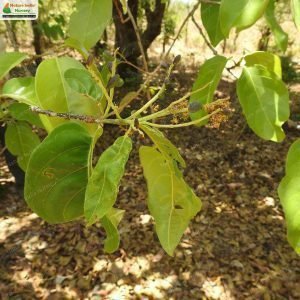Terminalia chebula, commonly known as Haritaki or Chebulic Myrobalan, is a medium to large deciduous tree that can grow up to 30 meters tall. The leaves are alternate, oval, and 7-8 cm long with a smooth, glossy surface, while the tree produces small, dull white to yellow flowers with a strong, unpleasant odor. The fruit is a drupe, ellipsoid to ovoid, and turns yellow to orange-brown when ripe. Native to South and Southeast Asia, including countries like India, Nepal, Bhutan, Bangladesh, Sri Lanka, Myanmar, Cambodia, Laos, Vietnam, Indonesia, Malaysia, Pakistan, and Thailand, the tree is commonly found in dry slopes and forests up to an elevation of 900 meters.
The Haritaki tree’s ecological significance extends beyond its physical characteristics, as it provides a valuable source of food and habitat for various wildlife species, including insects and birds.
Habitat
Terminalia chebula is native to South and Southeast Asia, including countries like India, Nepal, Bhutan, Bangladesh, Sri Lanka, Myanmar, Cambodia, Laos, Vietnam, Indonesia, Malaysia, Pakistan, and Thailand, and is commonly found in dry slopes and forests up to an elevation of 900 meters.
Planting and Care
-
Propagation: Propagated through seeds, which should be soaked in water overnight to soften the hard outer coating before sowing.
-
Soil Type: Prefers well-drained loamy to sandy loam soil.
-
Watering: Requires minimal watering once established, as it is drought-tolerant.
Additional Information
-
Economical Values: Produces durable timber used in construction, furniture, and agricultural tools.
-
Medicinal Use: Terminalia chebula is widely used in traditional medicine for treating various ailments such as digestive issues, respiratory problems, and skin diseases. It is known for its anti-inflammatory, antioxidant, and antimicrobial properties.
-
Gum Production: The tree produces a gum known as Indian gum, used in various industrial applications.
-
Wildlife Significance: The flowers attract various pollinators, including bees and butterflies. Birds feed on the nectar and insects found on the tree.







